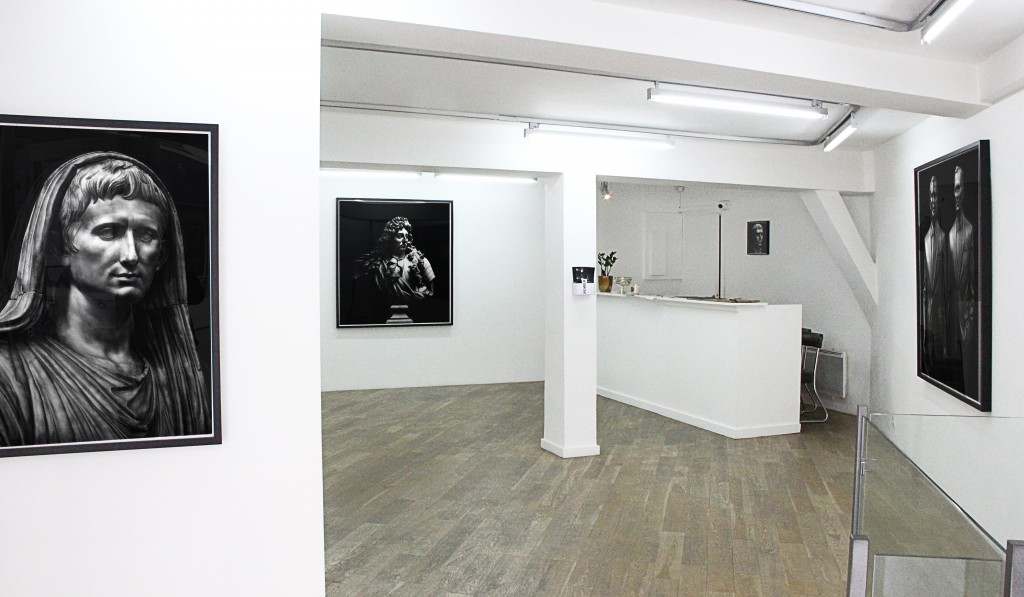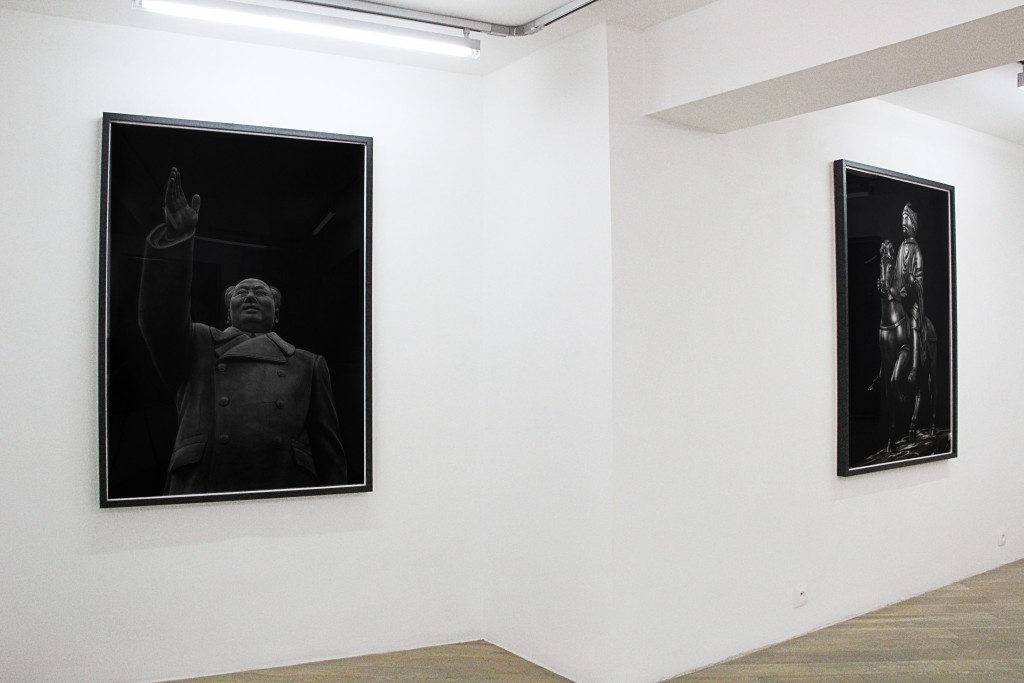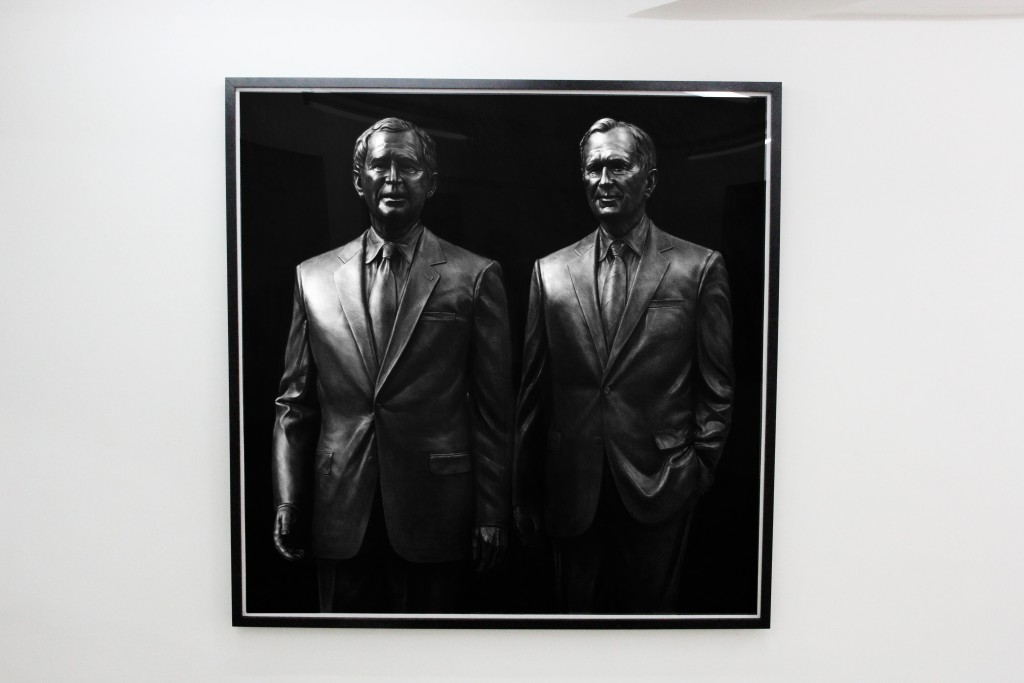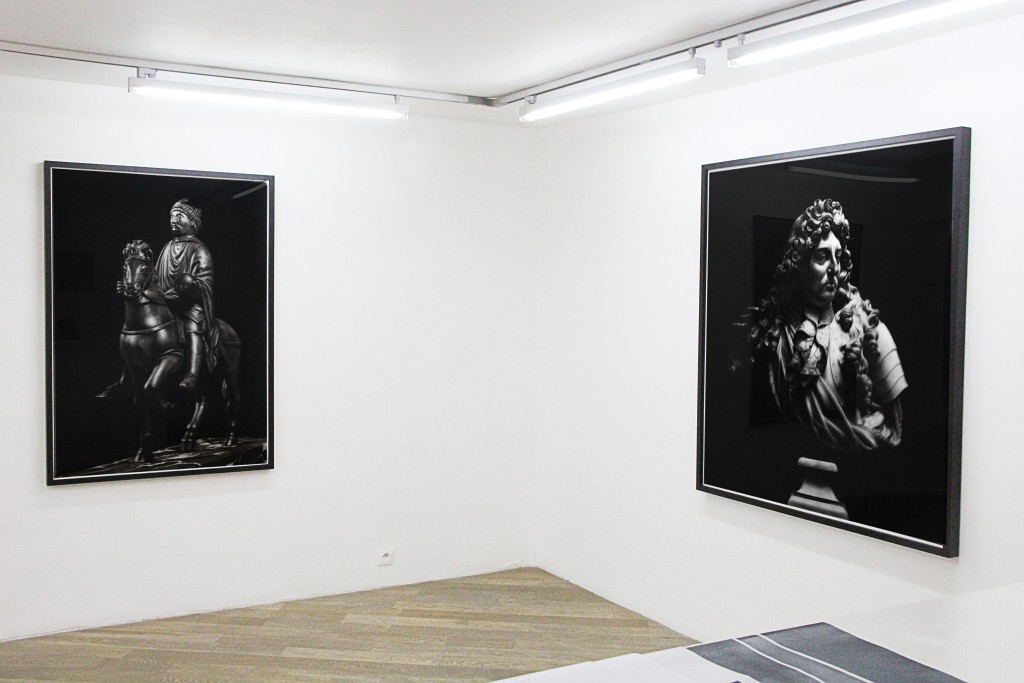“The despot dies smiling,
he knows that after his death,
tyranny only changes hands,
and servitude has no end “
Heinrich Heine, King David, 1851.

Sobering Galerie presents POWER, an exhibition of paintings and pastel drawings by Bilbao based artist, Kepa Garraza.
“POWER” is a reflection about the representation of power in Western culture from classical Greece to the present.
In this exhibition, Kepa Garraza focuses on the use of sculpture to make portraits of historical leading figures directly related to political or military power.
These figures ranging from Julius Caesar to George Bush includes leading protagonists of history such as Philip II or Napoleon Bonaparte. All these characters have been key to understand the history of the Western civilization and all of them have used art as a propaganda tool to serve their own interests.
The POWER
The narrative of the exhibition fits around the instrumentalization of art by the State and the identification of power with a series of emblematic characters.
Throughout history, powerful kings and politicians summoned artists to glorify their image. Artists have always obeyed and fulfilled their purpose, but the creativity will never obey and by adding something more then the blank and precise image, something that had not commissioned or planned, that had not been requested, this from those days far behind can simply be called art.
The Power series by Kepa Garraza raises two peculiarities: first, his work is not only about observation, enjoyment and learning from the past, but about reinterpretation. The artist does not limit himself to the aesthetic value of the object of art, with all the complexity and richness of the work taken as a model. But in addition, Garraza unifies with its specific mode of representation. All this portraits, sculptures and busts have been taken from very different eras, contexts, and styles.
So the statue of Charlemagne or a bronze of the father and son Bush appear visually equivalent, leveled out as specimens of taxonomic research. This process of unification of the different, something like a minimum common denominator of power representation, manages to identify and isolate the mechanisms that produce it: iconographic elements such as the laurel wreath or the sword, visual sublimation mechanisms such as the base or the horse, anatomical and gestural stereotypes … a whole store of signs that have been shuffled for centuries by artists and that this leveling carried out by the artist exposes the light.
The clothing, the helmet, the breastplate, the toga, the sword, the eagle or the horse, the baton of control, the laurel, are shown as essential elements of the representation: they are transfer objects of his authority, his iconographic dictionary, a symbolic concentration of the power they exert. As we get closer to the present, the function of these elements gradually decreases and becomes more daily: Lenin’s vulgar cap, Mao Zedong’s overcoat, until he reaches Kim Jong-il’s poly skin jacket: the old symbols are degraded and there are no new ones to replace them. Photography first and film and television later have eroded the communicative power of the old symbolic devices. Surely statues will continue to be erected in different cities of the world, but it seems certain that we are witnessing the decadence of this symbolic system that has maintained its validity for so many centuries. The presence of power is inevitably digital and to some extent, this series of Kepa Garraza explains what has been but will not be.

The characters.
For the exhibition POWER at the Sobering Galerie, Kepa Garraza has chosen 8 historical figures, from Pericles to George Bush, including Charlemagne, Alexander the Great, Mao Zedong and others.
A walk through civilizations and empires, conquered and lost for centuries and that in this series appear summarized almost in an instant. A real concentrate of imperial power, violence, tyranny, and testosterone.
The gallery filled with this characters impresses. They are watching us from above with their stony, impassive, cruel eyes. Before these images, not only the original statues but also the versions that Kepa Garraza has enhanced with the use of darkness, the viewer is supposed to feel dwarfed and fragile, belonging to another species, as the image of the emperor, although represented under a human appearance, pretends to be superhuman, admirable and irreplaceable.
These representations do not seek proximity, communication or empathy, but distance and severity. The statues do not understand soft power. The protagonists are like us, but different. They are the great characters of history, the powerful, those who extended their dominion or at least tried, beyond the borders of their State. How many deaths are attributable to these 8 characters as a whole? Not even the most adventurous of historians could propose a task of quantification. How many battles, sieges, fires, looting, rapes? How many millions of displaced people, enslaved, silenced? The universal history of violence is concentrated in them. Some seem really fierce and ruthless, others more human, but make no mistake, because the Empire can only live through death.

The technique.
A grisaille is a painting executed entirely in shades of grey or of another neutral greyish color.
Traditionally, the practice of grisaille is attributed to the painting of statues on the exterior panels of the altarpiece. Gilbert Lascault once said: “Gray becomes one of the ways in which a painted statue, a figurative sculpture, is designated on a canvas.” He points out that the model to which the painting referred is a sculpture, not a living being. This model can have, in the everyday world, an existence prior to the painting. It can also be invented by the artist who paints it and only exists in his head, before being painted “. So the painters not only reproduce sculptures but also invent figures with the intention of being read as statues. They use the paint to denature it, deprived of the key component of color, but instead or as a substitute, they propose the tactile quality of some images that therefore approach the effect of the sculpture. [Fig. 1]
The practice of the grisaille also has relation with the economy: the value of marble or another stone in front of the drawing and, therefore to the land of the false, of the imitation.
The statues are gray. Depending on the type of marble or bronze, in lighter or dark shades, matt or bright.
Kepa Garraza has considerably reduced the lighting, dramatized it in biased and violent foci and, above all, placed the isolated figures in a cave of darkness. Without a background, the characters emerge scarcely from this absolute darkness, as if illuminated by theatrical scenes: everything is carefully set, as befits the scenography of absolute power.
In Power series, Garraza uses prevention against the color of the statues as a starting point. Particularly monochrome and dark, his drawings of statues escape from the pictorial and move in the ambiguous terrain between sculpture and photography: gray is no longer a color, but an expressive banner, while photography, in these drawings of statues, appears as a disturbing presence between the mechanical image and the manual.
Even if the works presented on the first sight might remind photographs, the drawings of Kepa Garraza arrive where photography cannot reach, they express with irony and passion what is beyond the reach of mechanical reproduction.
Installed on the white walls of the gallery, drawings in the Power series seem to weigh tons, despite being held only on a light sheet of paper.

Francisco Javier San Martín, Masha Andreeva
Elie Faure, Historia del Arte. Arte Antiguo, traducción de Margarita Nelken, Poseidón, Buenos Aires, 1943, vol. 1, pág. 155. Permítasenos señalar solamente cuatro ejemplos excepcionales de los últimos quinientos años: los Ritratti di Federigo de Montefeltro e della sua moglie, pintado por Piero della Francesca en 1472 y conservado en la Galeria degli Uffici de Florencia, imagen de la alternativa del poder duro alternando con el blando; el impresionante Carlos V en la Batalla de Mühlberg, realizado por Tiziano Vecellio en 1548, perteneciente a la colección de El Prado de Madrid, que se convirtió rápidamente en modelo de retrato ecuestre; el Portrait de Louis XIV en costume de sacre, de Hyacinthe Rigaud, realizado en 1701 y conservado en el Louvre, del que Andreas Prater hace una acertada definición del poder absoluto: “La boca está cerrada, irónica y decidida, los ojos tienen un brillo duro y oscuro, la fina nariz revela intransigencia. Este soberano no es bueno ni malo, sino que se encuentra más allá de todas las categorías morales”; y, por último, la impresionante escenografía del poder imperial de casi diez metros de ancho por seis de alto realizada entre 1806 y 1807 por Jacques-Louis David, Le sacre de Napoléon, conservado también en el Louvre. Georges Didi-Huberman, Ante el tiempo. Historia del arte y anacronismo de las imágenes, traducción de Óscar Antonio Oviedo Funes, Adriana Hidalgo, Buenos Aires, 2006, pág. 12. http://kepagarraza.com/power.html Ver Grupo de Investigación “Modos de conocimiento artístico”, Arte: Diccionario Ilustrado, Universidad de Vigo, 2012, pág. 256.. Ver Francisco Javier San Martín, “Negro”, en el catálogo de la exposición Valérie Belin, Koldo Mitxelena Kulturunea, San Sebastián, octubre de 2003 – enero de 2004, pp. 36-49. Walter Benjamin, “Calle de dirección única”, traducción Jorge Navarro Pérez, Obras, IV, Abada, Madrid, 1910, pp. 57-58. A menudo olvidamos que las grandes figuras de la Historia del Arte, tanto los precursores del siglo XVII como Johann Wincklemann, Lessing, o sus continuadores en el XX, como Alois Riegl, Aby Warburg o Erwin Panowsky, manejaron prácticamente siempre grabados y fotografías en blanco y negro. [Fig. 3] Gilbert Lascault, “Elementos para un dossier sobre el gris”, en Revue d’Esthétique, La práctica de la pintura, Gustavo Gili, Barcelona, 1978, pág. 119. Ver un interesante artículo de Antonio Navas Montilla “Gris sobre gris”, Anales de Historia del Arte, Universidad Complutense de Madrid, 2013, vol. 23, núm. Especial, pp. 363-364.

